As a result of hopping on a plane, I find myself in an unfortunate time zone for some FA Cup viewing, so I did the normal thing—woke up, sleep-deprived, to watch a seagull fight a magpie.
Was it worth it? Well, my resting heart rate won’t be thanking me any time soon.
So here are some notes I made as I watched the match, my mind fighting off the beckoning of a comfortable, warm bed.
👉 OOP Setup
From kick-off, Brighton’s shape OOP resembled a 4-4-2.
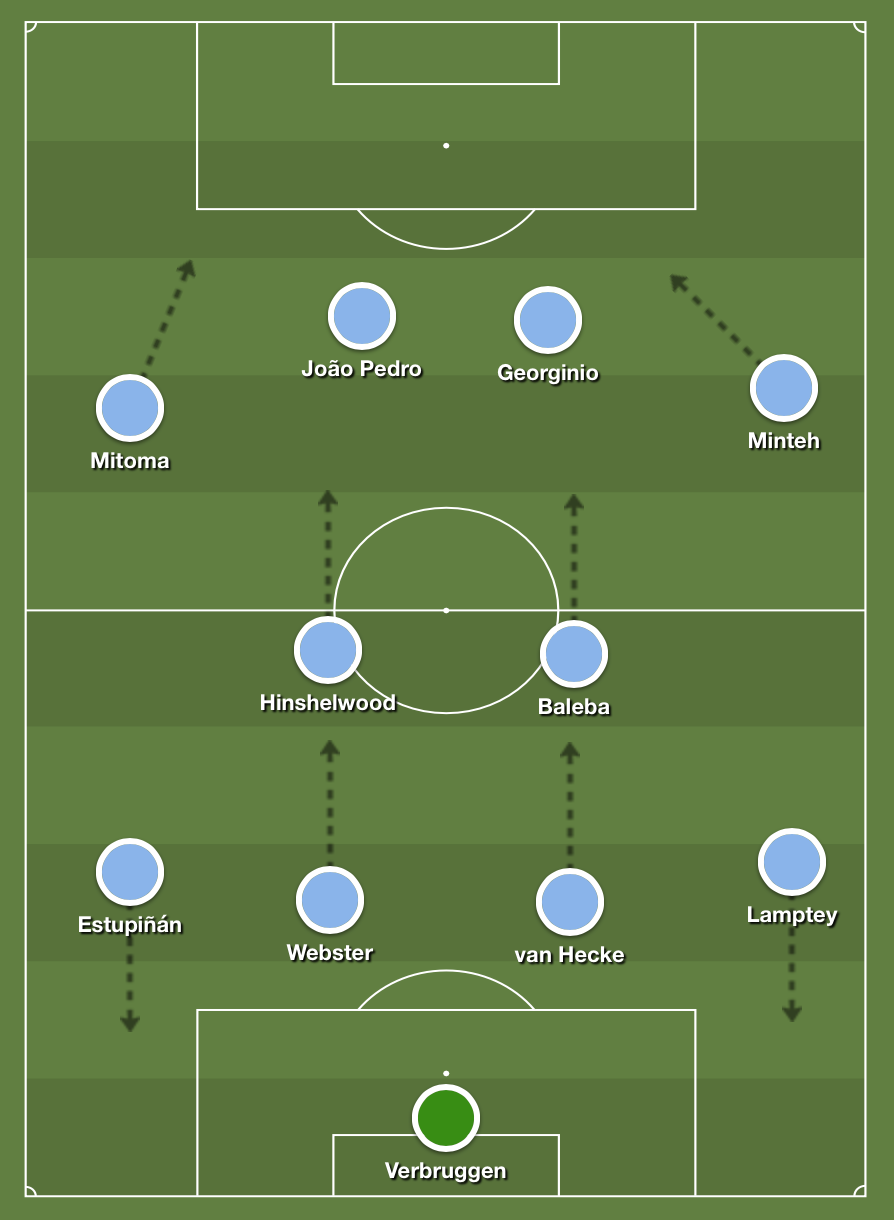
The aggressive block may look a bit odd, but let me explain:
João Pedro dropped deep and, while he’s usually quite aggressive in the press, he held off today—almost as if baiting the centre-backs into making a pass. This was then followed by three players—Carlos Baleba, Jack Hinshelwood, and Jan Paul van Hecke—acting as m2m pressing triggers, latching onto their respective targets. Hinshelwood pressed Fabian Schär, Baleba tracked Sandro Tonali and Joelinton, and van Hecke often had to cut off passing lanes to Alexander Isak by stepping out of his defensive line to prevent the ball from reaching him.
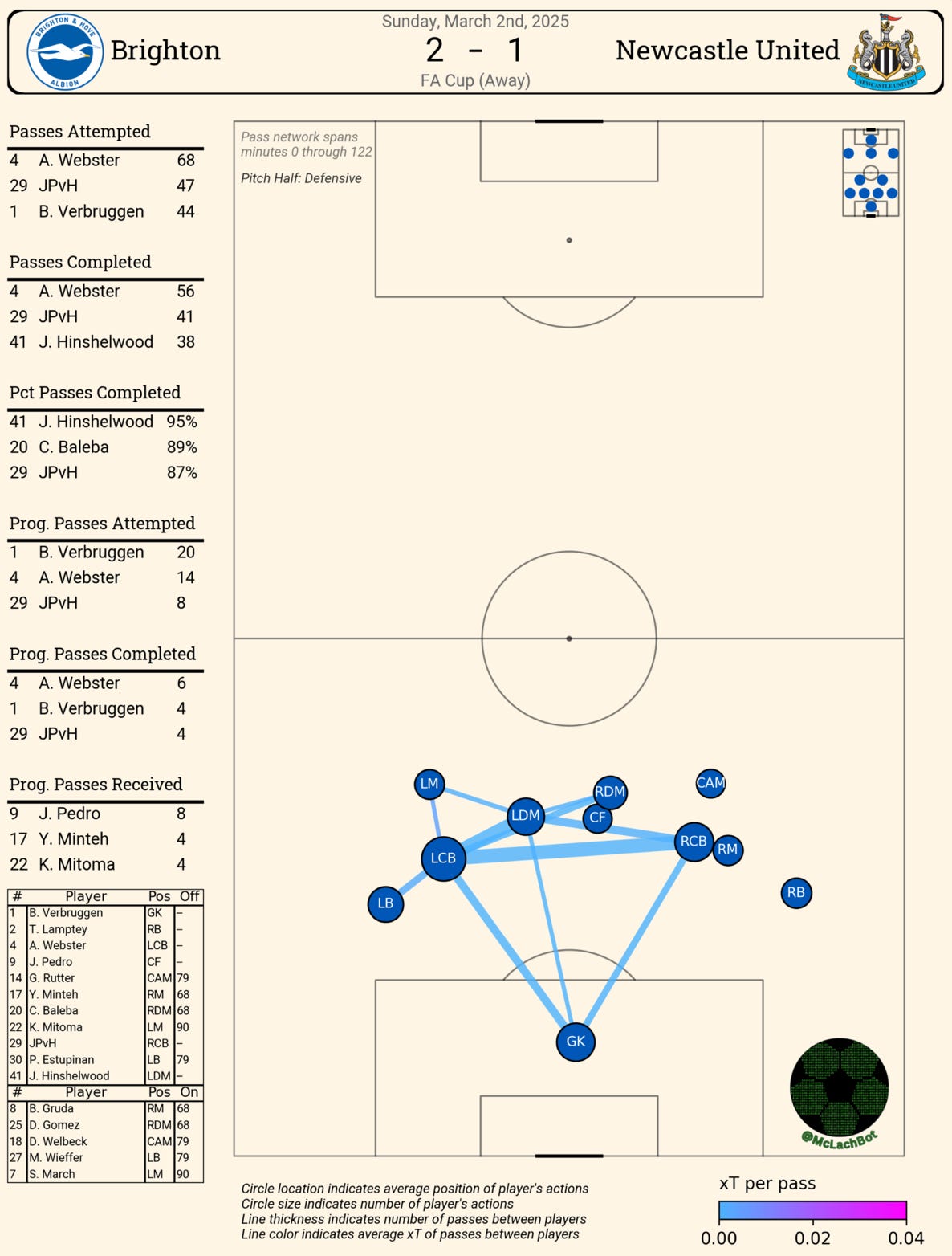
👉 Carlos Baleba
Out of all of Brighton’s players, Carlos Baleba is the one most regularly deployed as a highly aggressive ball-winner. He’s tasked with driving high up the pitch with the ball, laying it off, then sprinting all the way back to win it again—before the team swarms around him and the cycle repeats, over and over.
You need pace behind you for this to work, and the fact that it’s working without such pace just shows how good Baleba is.
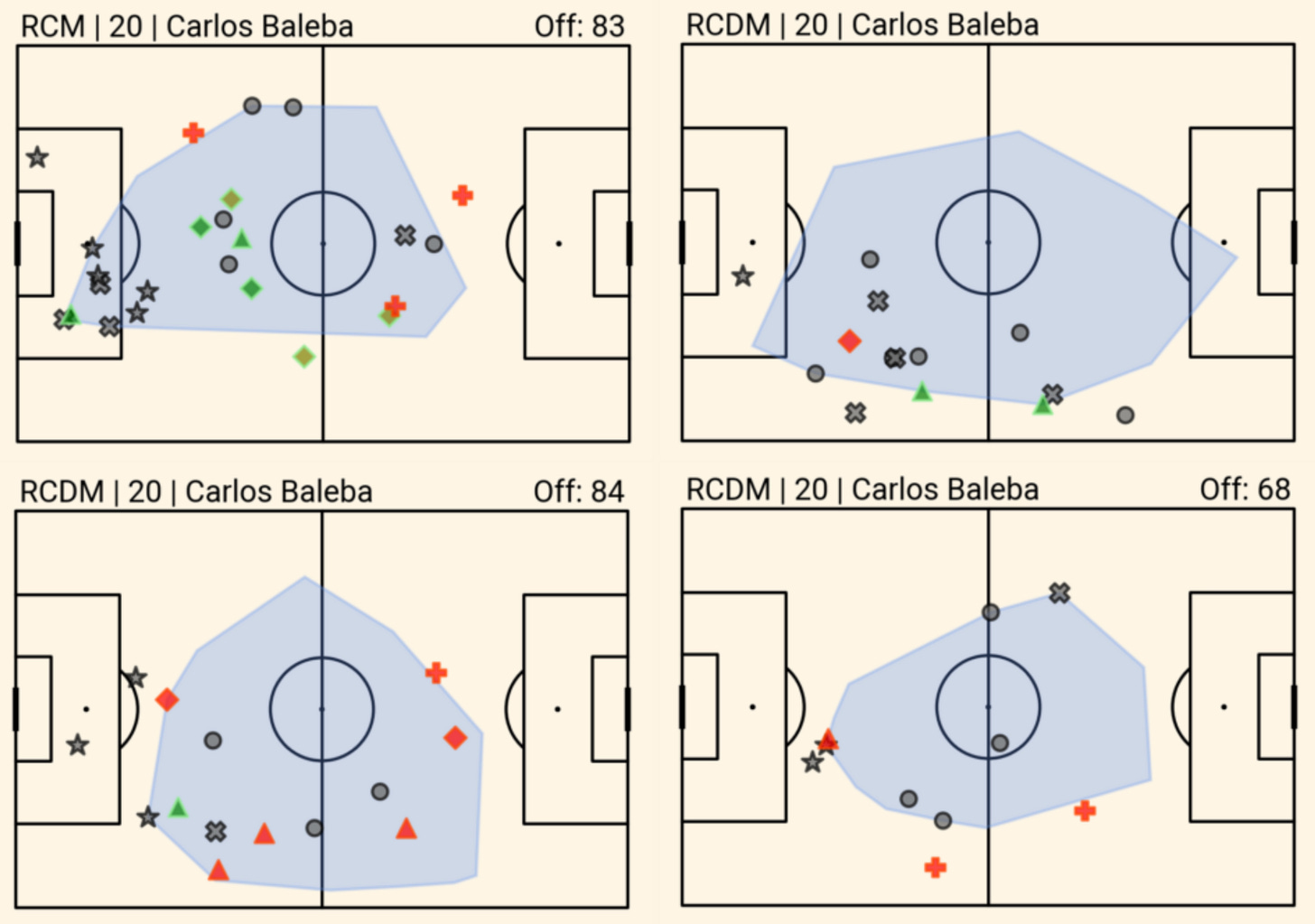
Another noticeable improvement in Baleba’s game is how quickly he triggers his shots. In other words, aside from everything he already does (everything), he’s on his way to becoming a midfielder who can score goals—essentially, one of the most complete players in the world.
👉 Bypassing the Press
A distinctive feature of Brighton’s last couple of matches—understandably, given the nature of the games—is their tendency to go long from goal-kicks.
Over the season, Brighton ranked 14th for launched goalkeeper passes (27.5%) and 16th for launched goal-kicks (26.2%). Against Bournemouth, however, Verbruggen launched 54.3% of his passes and 80% of his goal-kicks.
The reasoning behind this is quite simple, really—bypass Bournemouth and Newcastle’s intense presses by quite literally playing the ball over their heads. This, combined with Yankuba Minteh’s pace out wide and João Pedro’s heading ability, meant Brighton always had an outlet to launch the ball.
Thwack it onto JP’s head, the ball rolls onto Georginio’s foot, and one pass into Minteh running behind is all you need for a goal.
👉 First-phase Build-up
Brighton’s first-phase build-up, while maintaining similarities to old patterns, had subtle differences.
The pivot—Hinshelwood and Baleba—stuck to each other like glue (De Zerbi-esque), which afforded room for both full-backs, Estupiñán and Lamptey, to position themselves wider than usual. What we’ve seen from Hürzeler is that the full-backs typically invert in the first phase (there is no double pivot, with a preference for a single pivot) and only begin to overlap in the final phase.
But here, they simply stayed wide.
Hinshelwood was used as a sort of decoy. While he occupied positions favourable for metronomic play, he was largely kept away from build-up, instead taking the majority of his touches in the second phase. Baleba, meanwhile, was given freedom—freedom, and some more freedom—to carry the ball.
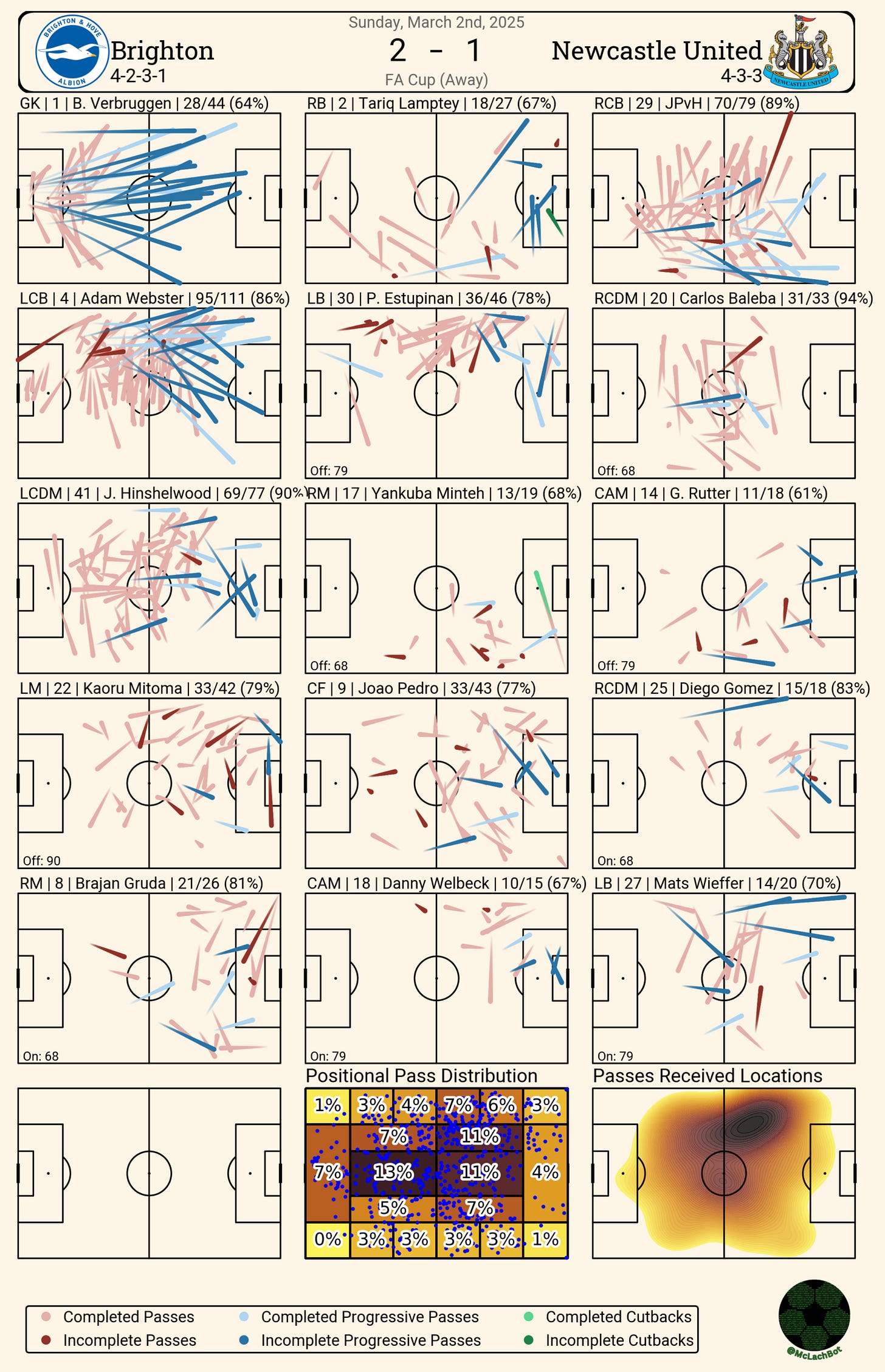
👉 Attacking Play
What this translated to in attacking play was a very narrow, four-pronged attack, with wide and overlapping full-backs, a narrow pivot behind the wingers (who occupied spaces you’d expect attacking midfielders to), and extremely high centre-backs—just look at van Hecke’s pass map above.
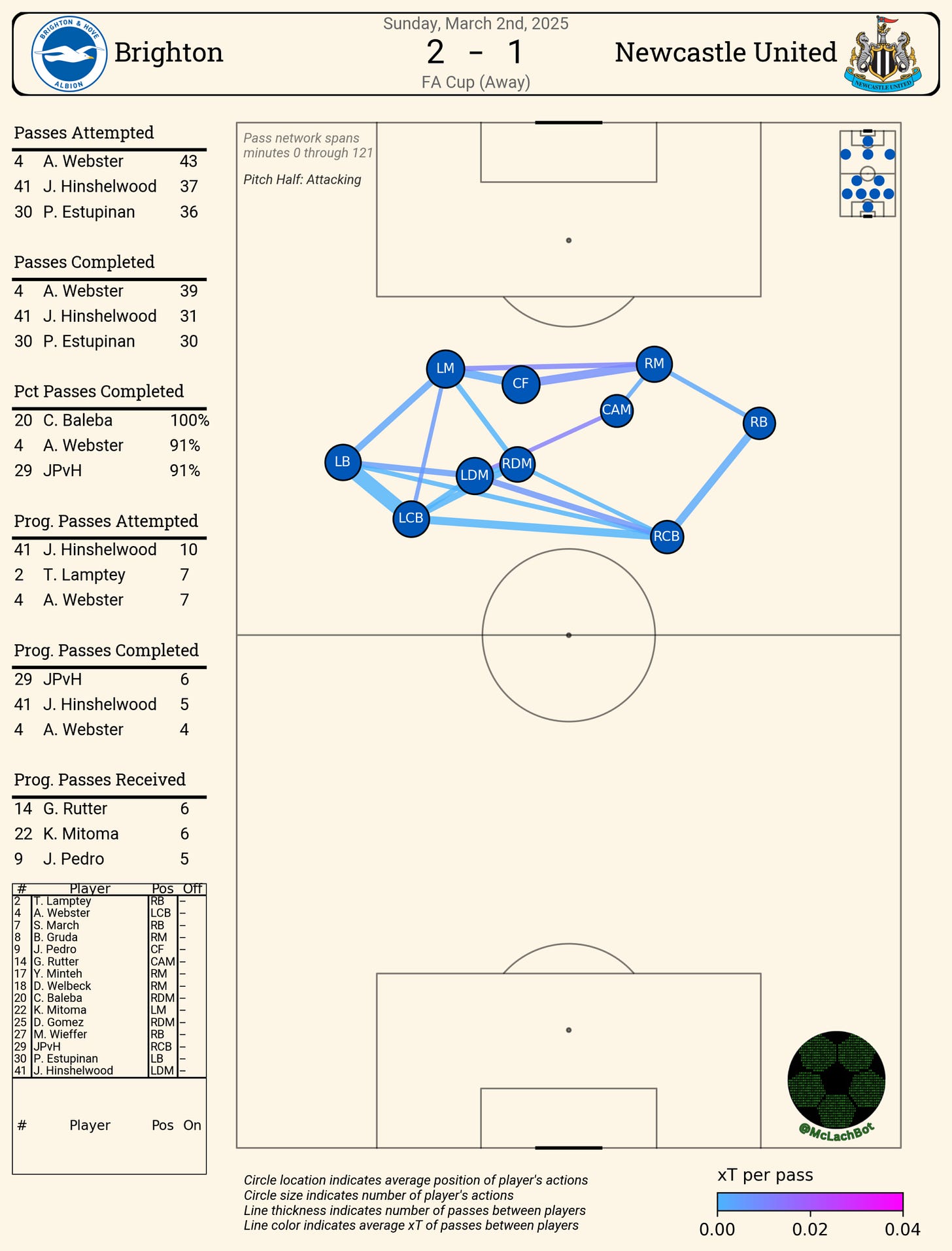
The reason behind this is quite simple—Newcastle’s CB pairing isn’t the best, nor the quickest. You want to suffocate them, and doing so with an attacking quartet of Mitoma, Pedro, Georginio, and Minteh is definitely the way to go. Mitoma can dribble and feint his way out of even the most uncomfortable situations, Pedro and Georginio trigger their shots early, and Minteh… oh my, Minteh—the pace, the dribbling, the work rate…
Then, on the flanks, you have a pair of very quick wing-backs who can afford to sprint back in transition, with Carlos Baleba’s duel-winning presence and Jack Hinshelwood—positioned even deeper—protecting the central areas.
The perfect game plan to mitigate one of Brighton’s biggest weaknesses—keeping up with their own incredibly high defensive line.
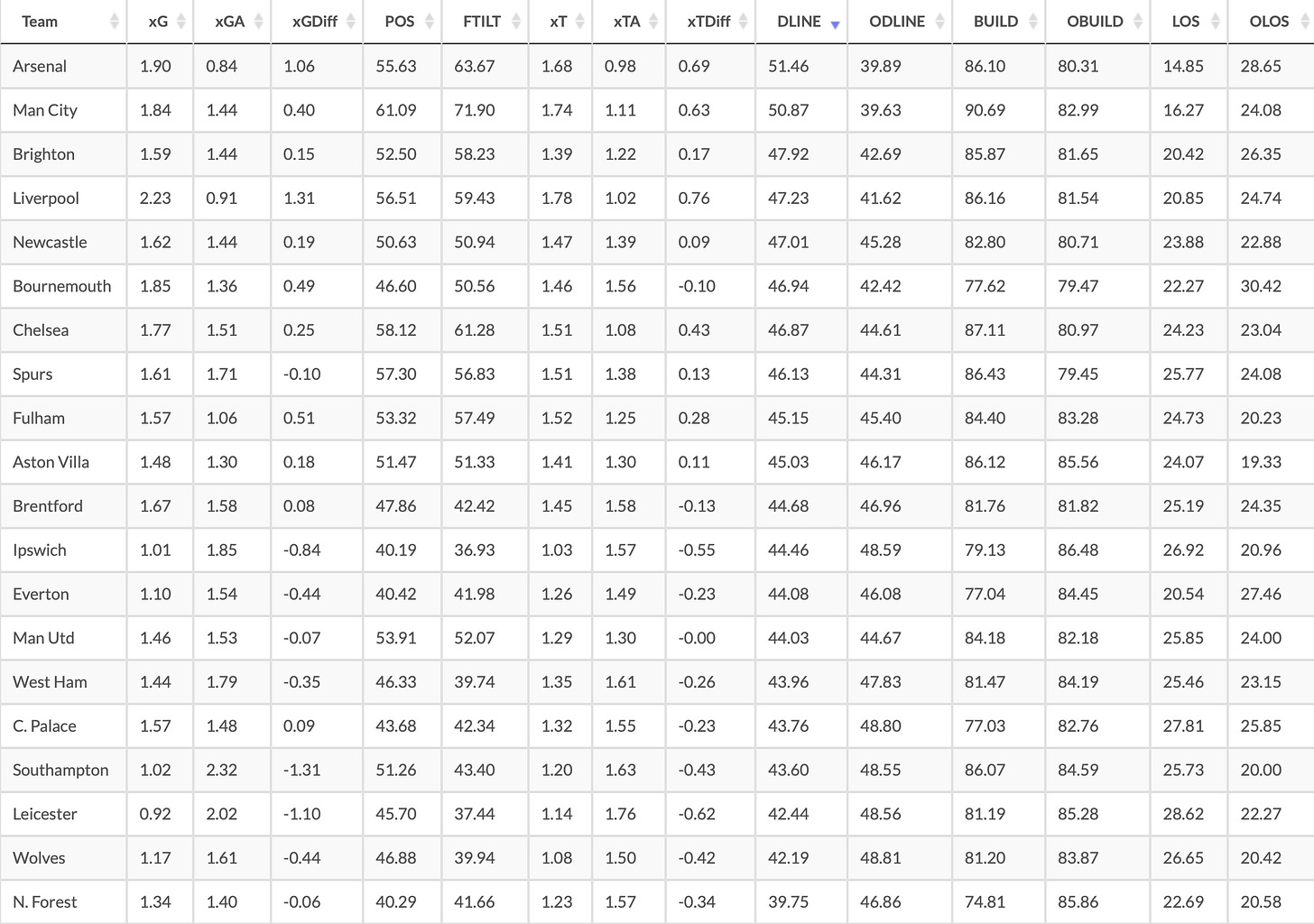
👉 Attacking Rotations
Brighton’s left-hand side was extremely fluid while Mitoma was on the pitch. Mitoma and Estupiñán constantly rotated through the second phase of build-up, throwing Newcastle’s transition into disarray—Harvey Barnes had no choice but to continually drop deeper to support Tino Livramento, meaning Newcastle lost a lot of running power up top.
A pacy left-hand side with running and carrying power, doubled up by an even quicker right-hand side… yeah, that is fun.
👉 The Psychology of a Penalty
A really small section here, but Isak’s penalty was perfect—and it was bound to be. He began his run-up and took the shot at just about the perfect moment after the whistle (waiting too little suggests nervousness, waiting too long suggests overthinking) and just absolutely buried it.
Verbruggen guessed right, but you can’t contain that power. I’m running out of superlatives for Alexander Isak.
👉 Almost There
As time passed, the match devolved into chaos. But good players thrive in chaos, and so did Danny Welbeck. Pre-match, Hürzeler had this to say about Welbeck—and boy, was he right:
“Because quality-wise, we don’t have to talk. He’s a special player, he can change the game with one action and that’s what he proved last time.”
And a special mention to Tariq Lamptey, who, barring one slight error, was excellent throughout the match. Will Brighton renew his contract? Can they compensate for his physical deficiencies, especially if Carlos Baleba leaves? That remains to be seen, but his performances as of late have been nothing short of exemplary.
👉 Conclusion
With every passing day, I’m more and more impressed by Hürzeler. He’s an incredible orator and an astute tactician. Yes, he makes mistakes, yes, he’s supposed to make mistakes, yes, he is learning.
And yes, he can become one of the best managers in the world. Hi Bayern München, here’s your future if things with Kompany don’t work out.
But yeah, Brighton’s game plan for Newcastle (A) was largely… perfect? It had a few flaws, but chaos ball isn’t a bad thing, and Brighton’s squad is nothing if not built for controlled chaos. However, the fact that the players—and the manager—are okay with sitting back and defending deep in a low block gives me hope that, no matter who the opponent is, there will be a solid game plan in place, and not a copy-pasted style from one match to the next.
So, you know, good things.
Thank you for taking the time to read this piece. I hope you enjoyed. If you did, please consider subscribing (it’s free!), and, until next time (Thursday), have a great day (as far as Mondays can go), and take care.




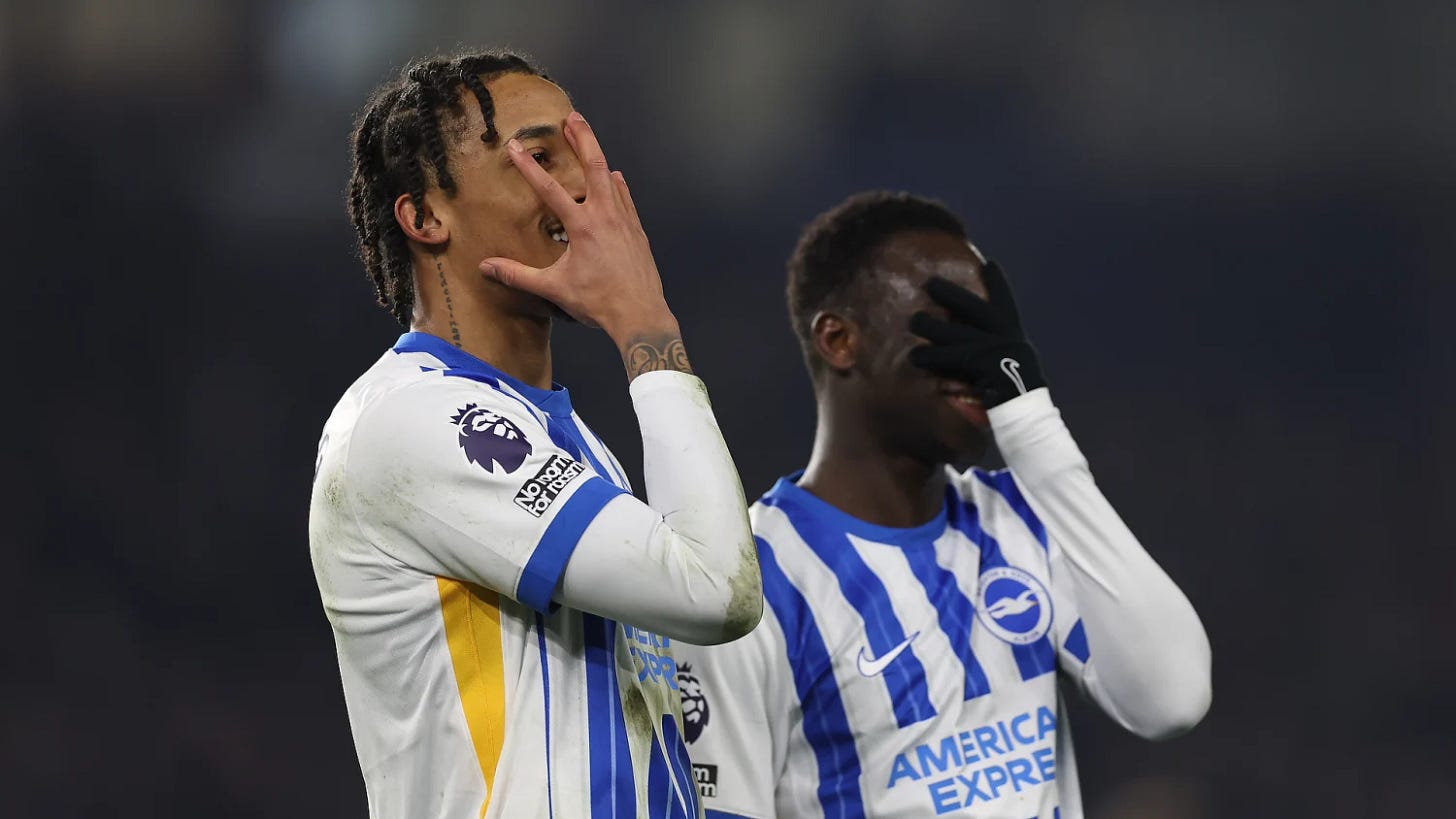
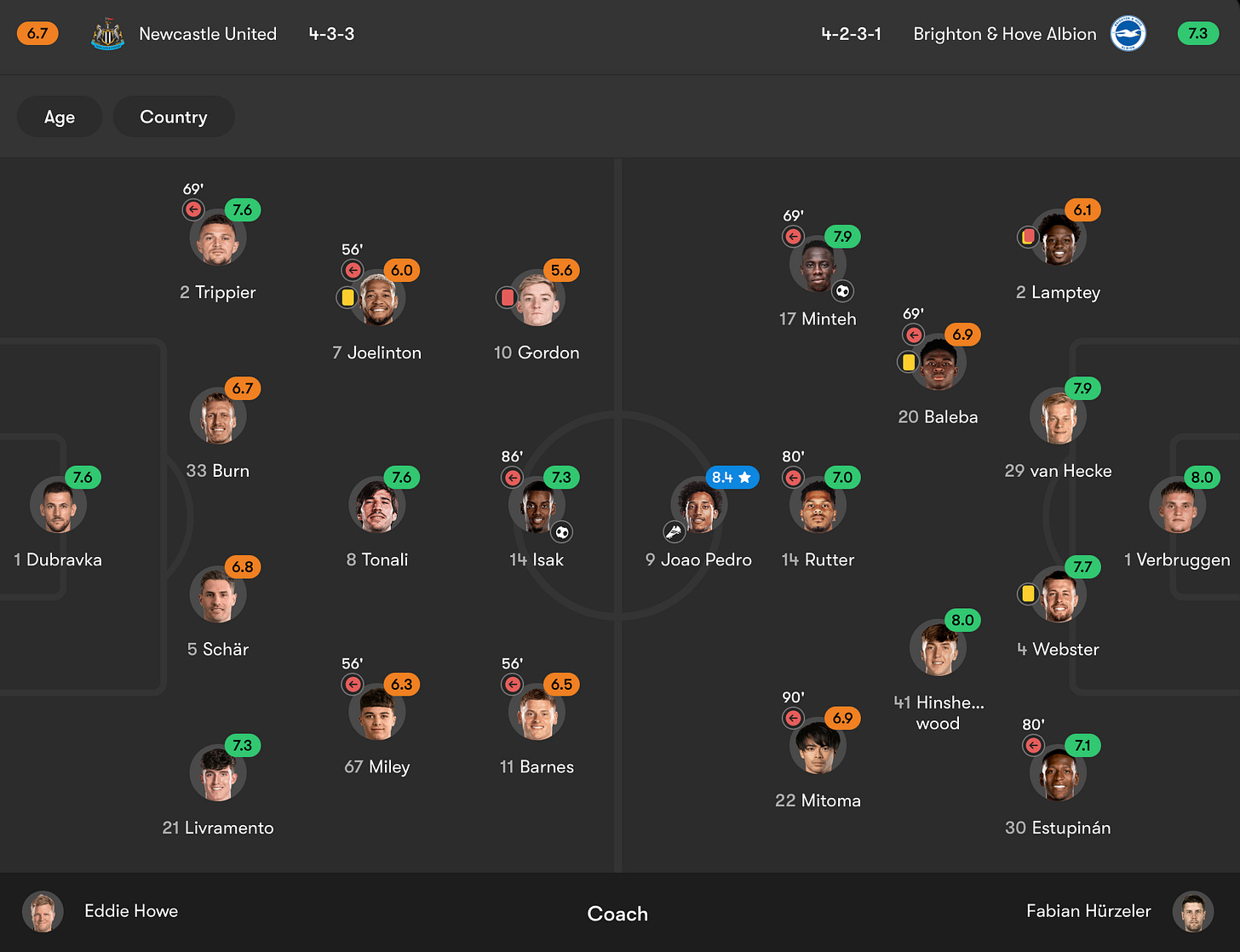
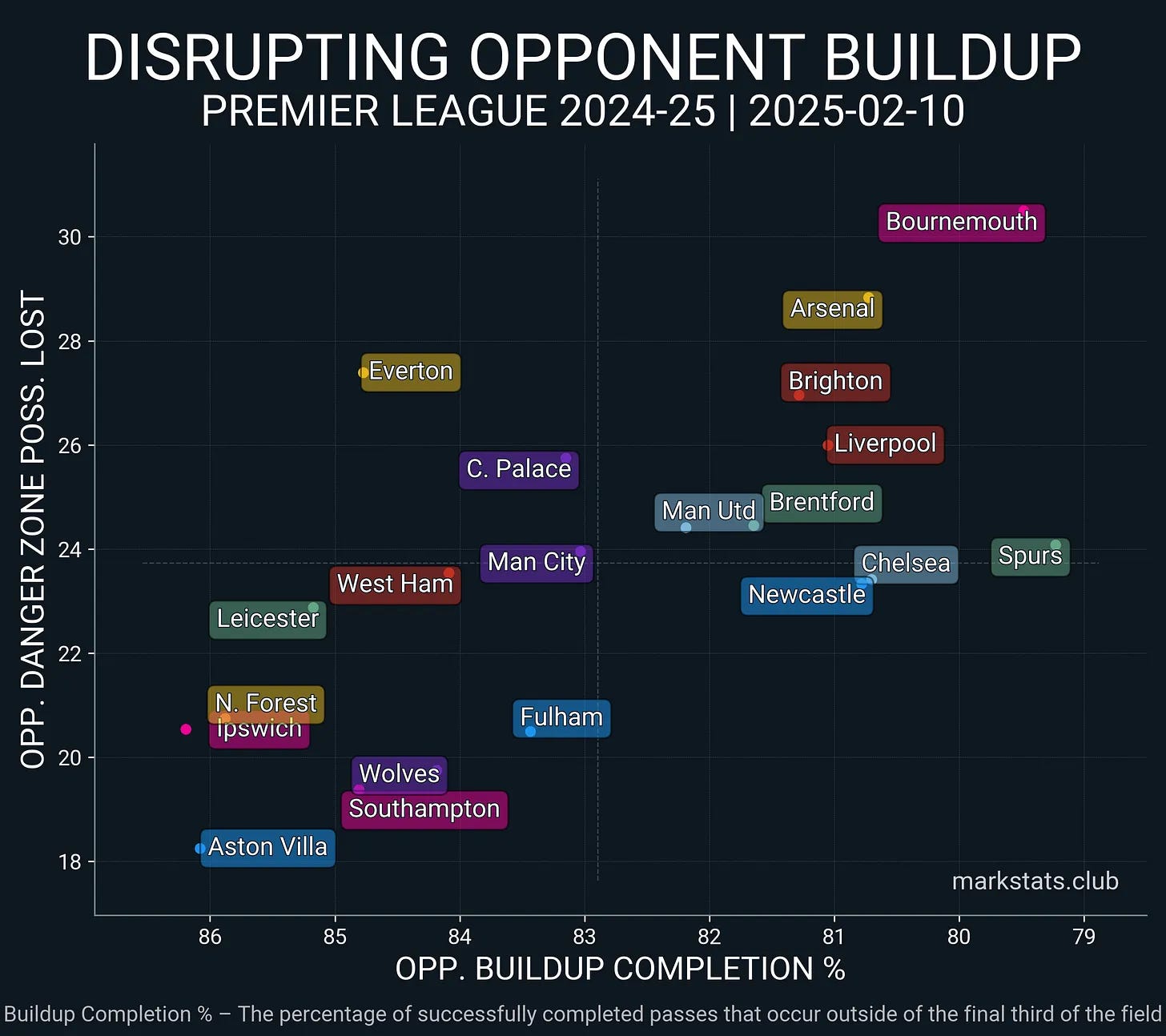
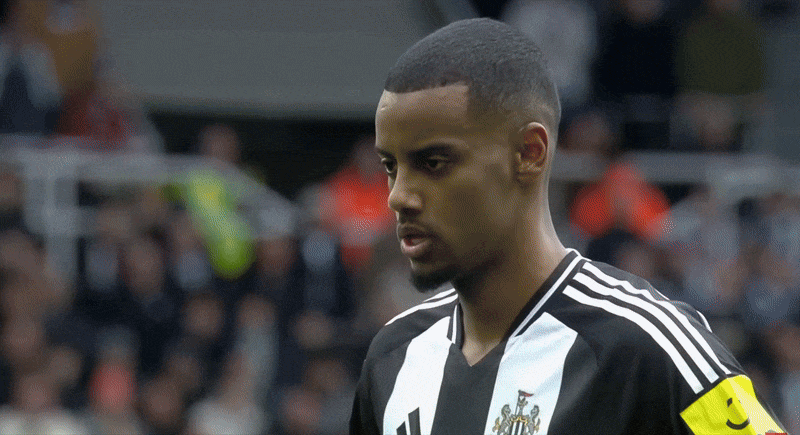
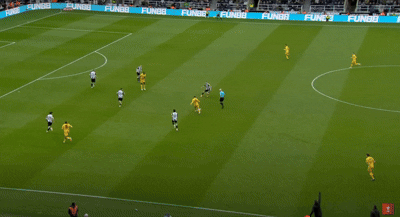

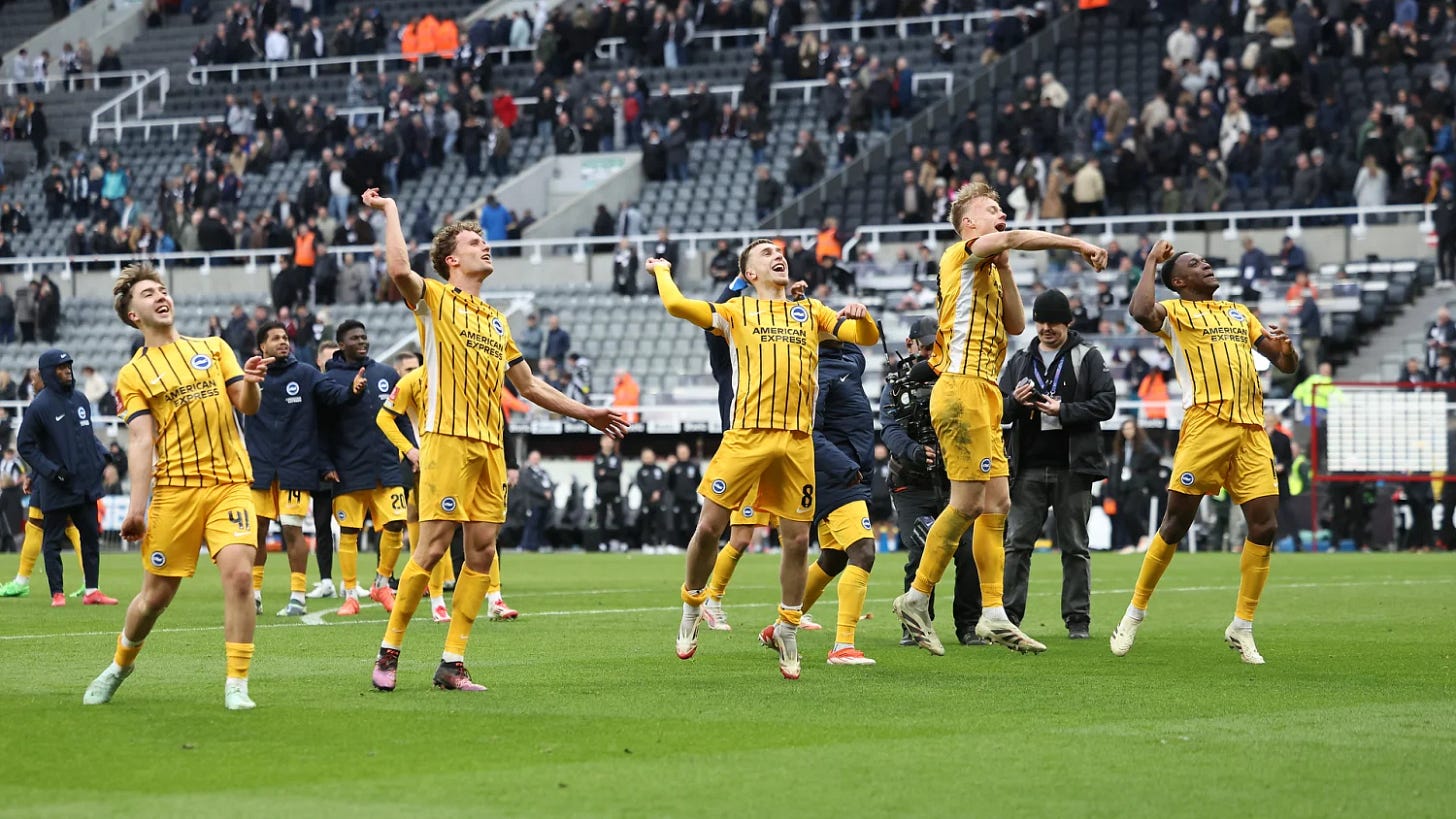
Great analysis. I'm particularly happy that you give a salute to Lamptey. He's been terrific since getting more game time and I never see him give less than 100%.